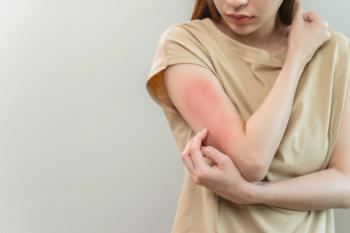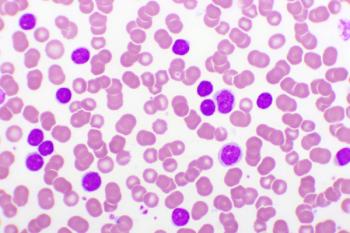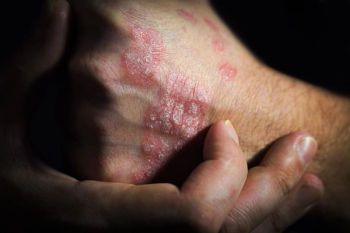
5 Rare Types of Arthritis
Key Takeaways
- Arthritis mutilans, a severe form of psoriatic arthritis, leads to tissue and bone breakdown, often linked to genetic factors like HLA-B27.
- Palindromic rheumatism features episodic joint pain and swelling without lasting damage, with management focusing on symptom relief.
Arthritis is not one disease, and it has an impact that extends far beyond the well-known osteoarthritis or rheumatoid arthritis.
For the millions of individuals all over the world living with arthritis, their
To mark World Arthritis Day 2025 on October 12, this article will explore 5 rare types of the musculoskeletal disorder, complex forms of the condition that can be challenging to diagnose and manage. These are types that present with a bewildering array of symptoms that often affect parts of the body other than the joints: opera glass hand,1 an inflamed urethra,2 sudden and recurring pain attacks,3 calcium pyrophosphate crystal deposits,4 and fever accompanied by joint pain.5
1. Arthritis Mutilans
For individuals who have this rare form of arthritis, also the most severe form of psoriatic arthritis, fingers and toes that look shorter or bent are a common result due to breakdown of tissue and bone around the joints.1 Approximately 5% of overall patients who have psoriatic arthritis develop this subtype of the disease6; ankylosis is another potential patient outcome. In the presence of certain genes, HLA-B27 or DQB1*02, individuals are more likely to develop arthritis mutilans through a combination of genetic and environmental factors, including physical trauma, and if their psoriatic arthritis goes untreated.7 Diagnosis is via thorough examination, including x-ray, CT scan, and MRI.
2. Palindromic Rheumatism
With this type of inflammatory arthritis, symptoms frequently disappear and involved joints seem to return to normal in between bouts of pain and swelling,8 which can last several hours to several days3 and reportedly do not cause lasting joint damage. The most commonly affected joints are those of the fingers, wrists, and knees, but the exact patterns of attack vary significantly among all patients.9 An exact cause of palindromic rheumatism is unknown, but allergic reactions have been proposed as a potential origin. Fatigue is a common aftereffect; this can last for days or weeks, affecting concentration and motivation. Recommendations for symptom management include wrist splints and insoles, relaxation exercises, heating pads, and gentle exercises.
3. Pseudogout/Acute Calcium Pyrophosphate Crystal Arthritis
Now known as calcium pyrophosphate deposition disease (CPPD), the former pseudogout is a chronic condition rooted in overproduction of pyrophosphate in cartilage.4,10 Although pyrophosphate is a naturally occurring chemical in the body and experts note its importance for healthy connective tissue function, excess deposits in the joints lead to symptoms similar to gout; the exact cause of the crystal formation and deposition remains unknown.11 At present, there are no approved treatments able to dissolve the crystals, but doctors can remove excess fluid with a needle and help to relieve pain and inflammation with combination treatment that usually encompasses corticosteroids or nonsteroidal anti-inflammatory drugs. Surgery is another treatment option, but this is typically reserved for more severe cases.
4. Reactive Arthritis
As its name suggests, the cause of the joint pain and swelling that characterize reactive arthritis is an infection elsewhere in the body.2 Targets of this joint pain most often are the knees, ankles, and feet, even though the source of infection is most often the digestive tract, genitals, or urinary tract. Development of reactive arthritis can occur weeks after a bacterial infection—some examples being a sexually transmitted infection, food poisoning, or a sore throat12—has resolved, and even then, symptoms that include fever, weight loss, abdominal pain, and mouth ulcers appear over several days.13 Also known as Reiter syndrome, reactive arthritis is a temporary condition that usually lasts for less than 1 year, and individuals have a higher risk of it if they have the HLA-B27 gene or are living with
5. Septic Arthritis
The usual cause of this infection of the joint fluid and tissues is nonviral in origin, with common implicated bacteria being Haemophilus influenzae, gram-negative bacilli, and streptococci.5,14 Septic arthritis usually occurs in 1 joint, but up to 20% of patients have several joints involved, with the knee again being the most common. Risk factors may include smoking status, age older than 80 years, alcohol misuse, intravenous drug use,
References
- Berger L. Psoriatic arthritis mutilans: what it looks like and more. My Psoriasis Team. Updated June 11, 2025. Accessed October 10, 2025.
https://www.mypsoriasisteam.com/resources/understanding-psoriatic-arthritis-mutilans - Mayo Clinic Staff. Reactive arthritis. Mayo Clinic. January 25, 2022. Accessed October 9, 2025.
https://www.mayoclinic.org/diseases-conditions/reactive-arthritis/symptoms-causes/syc-20354838 - What is palindromic rheumatism? Autoimmune Association. Accessed October 9, 2025.
https://autoimmune.org/disease-information/palindromic-rheumatism-pr/ - Gout/pseudogout. Pacific Arthritis. Accessed October 9, 2025.
https://pacificarthritis.com/diseases/gout-pseudogout/ - Septic arthritis. Johns Hopkins Medicine. Accessed October 9, 2025.
https://www.hopkinsmedicine.org/health/conditions-and-diseases/arthritis/septic-arthritis - What is arthritis mutilans? WebMD. Accessed October 10, 2025.
https://www.webmd.com/arthritis/psoriatic-arthritis/what-is-arthritis-mutilans - Watson S. What is psoriatic arthritis mutilans? HealthCentral. August 24, 2022. Updated July 31, 2024. Accessed October 10, 2025.
https://www.healthcentral.com/article/psoriatic-arthritis-mutilans - Palindromic rheumatism. Arthritis Foundation. Accessed October 10, 2025.
https://www.arthritis.org/diseases/palindromic-rheumatism - Palindromic rheumatism? Versus Arthritis. Accessed October 10, 2025.
https://versusarthritis.org/about-arthritis/conditions/palindromic-rheumatism/ - Rosenthal A. Patient education: calcium pyrophosphate crystal deposition (CPPD) disease (beyond the basics). Updated March 20, 2025. Accessed October 10, 2025.
https://www.uptodate.com/contents/calcium-pyrophosphate-crystal-deposition-cppd-disease-beyond-the-basics/print - Calcium pyrophosphate deposition. Arthritis Foundation. Accessed October 10, 2025.
https://www.arthritis.org/diseases/calcium-pyrophosphate-deposition - Reactive arthritis (Reiter’s Syndrome). Cleveland Clinic. Accessed October 10, 2025.
https://my.clevelandclinic.org/health/diseases/reactive-arthritis-reiters-syndrome - Reactive arthritis. MedicalNewsToday. Accessed October 10, 2025.
https://www.medicalnewstoday.com/articles/rare-types-of-arthritis#reactive-arthritis - Septic arthritis. Children’s Hospital of Philadelphia. Accessed October 10, 2025.
https://www.chop.edu/conditions-diseases/septic-arthritis
Newsletter
Stay ahead of policy, cost, and value—subscribe to AJMC for expert insights at the intersection of clinical care and health economics.









































